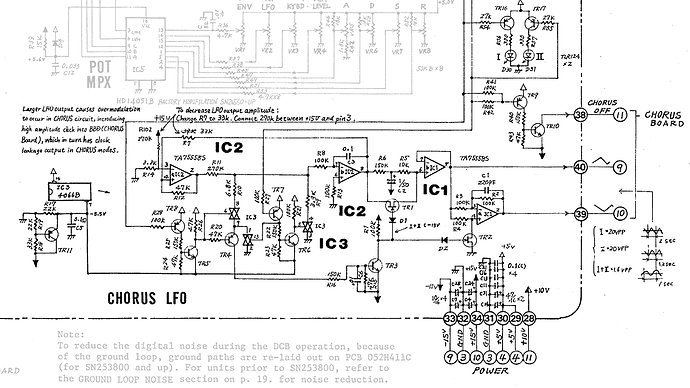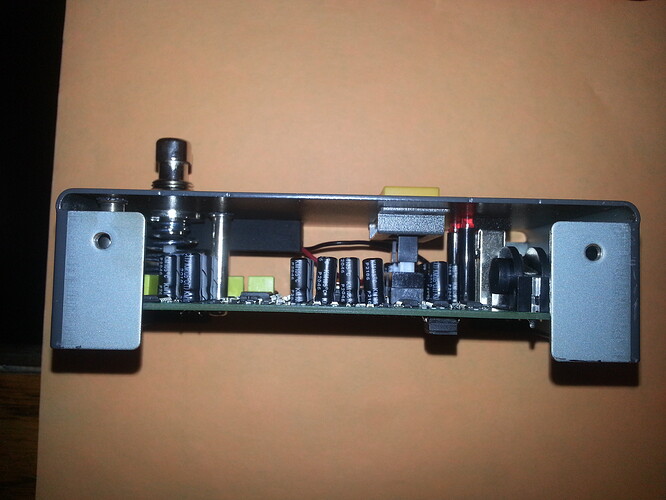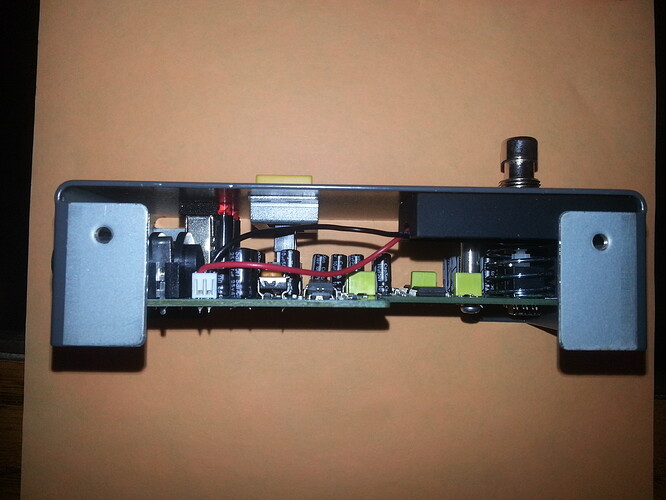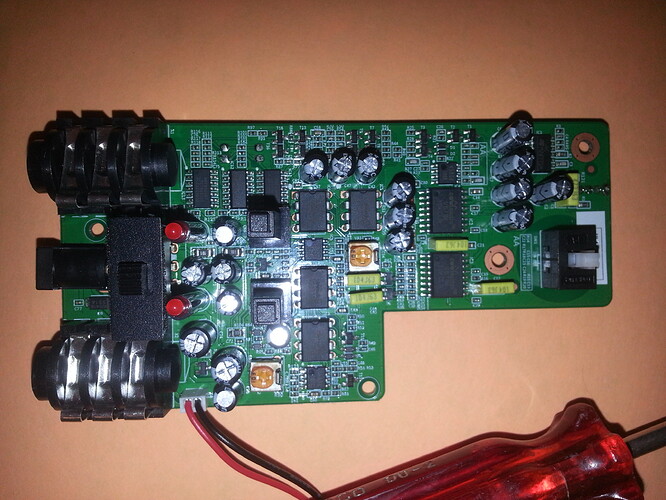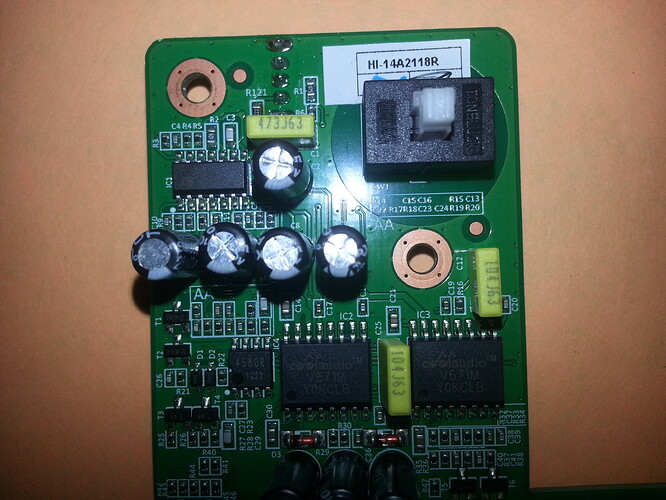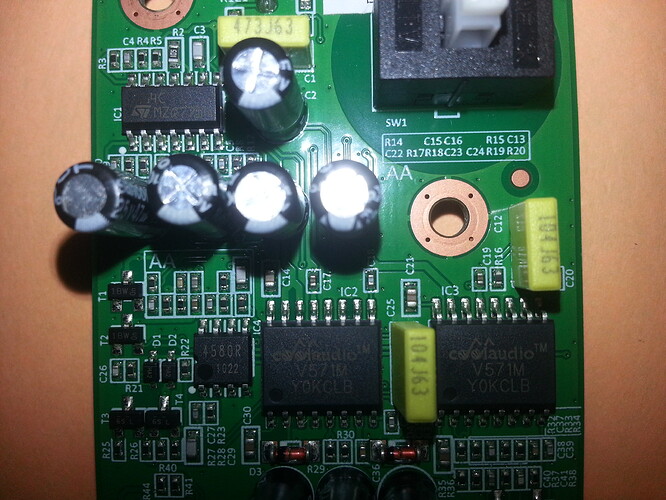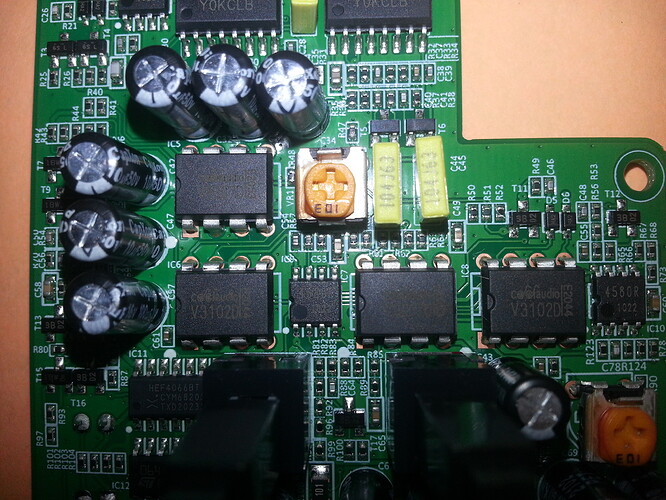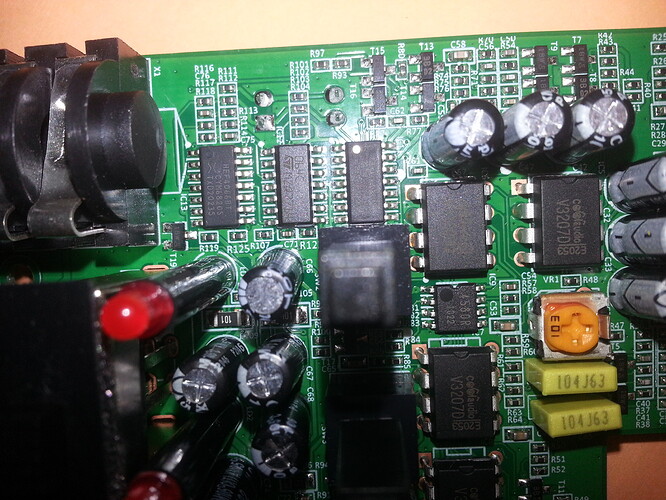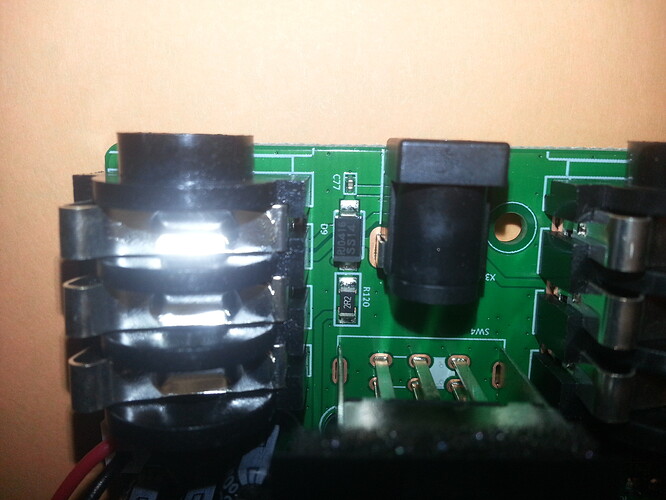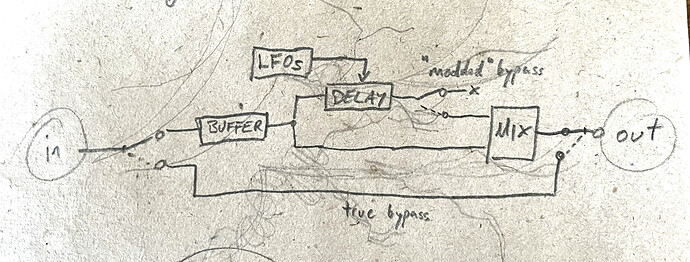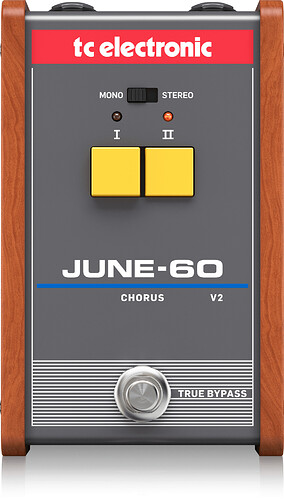Yeah, I remember looking at it and going wow i want that. But when I heard what was coming out, I was more like oh that’s so bad actually. V2 sounds a bit better though, and super cheap as everything else behringer owned.
I’m going to necromance this topic on up so I don’t have to create my own only to receive 0 to 1 responses…
So despite the biblical flood of shit the tc june 60 v2 pedal gets, I like the way it sounds. when I set the internal switches for synth mode to slow down the LFOs to a useable range, I think it sounds good enough for what I paid for it and maybe not like a juno (it does not sound like a juno) and maybe not better than any other analog chorus pedal, but it does not sound worse (now that the lfo speed tragedy that plagued v1 was properly addressed ). So the point being, I’ve heard closer sounding pedals to the juno but I don’t currently have a 600 boutique chorus pedal budget or 1600 to buy a juno that will need new sound chips when they fail a week after I buy it.
Here is my gripe, the june 60 and the 60 v2 are fucking worthless on the floor due to the huge level drop between the true bypass off stage, and the pedal circuit engaged stage. Sure you can use the pedal with the chorus off and keep the circuit engaged but I don’t like the way it mutes the natural tones of my guitar or any synth I use it with (cry cry) so I was wondering if the 1 person who will respond to this has any opinion on whether or not adding a buffer stage either as a dedicated buffer pedal in line with the effects chain, or a buffer added internally (soldered into the output stage of the pedal) would help fix the drastic volume level jump between when the footswitch is engaged/disengaged? if there is any other suggestion one might have which does not include the instruction to “throw it in / throw it at / throw it out of…” I would be open to any ideas.
thanks
So if I understand you correctly does the level drop when you engage the effect? I’m guessing it’s got true bypass switching? If so you could add an amp stage after the effect but before the switch so you’re boosting the output level of the effect circuit. Adding it before is prob just gonna overload the circuit. That’s if you’ve got space in the enclosure and the ability to tap into the bypass switch? You shouldn’t need more than a couple of resistors and caps and an op amp. With a few more passives you could use q dual op amp and use the second opamp in the package as a rail splitter if required
The effect is controlled by 2 juno looking plastic buttons which (I read) engage 2 triangle wave LFO’s - there is speed 1, speed 2, or with both depressed there is a mix of the 2 - the effect circuit is engaged with the footswitch, but the LFO effect within the effects circuit is not activated until you choose 1 / 2 or 1+2 which means there is no lfo, only a volume drop and a bit of tone suck when no LFO is engaged. The bypass is labeled as a true bypass circuit, and when the effect is bypassed using the footswitch, there is a significant difference between the signal level going through the pedal as to the level with the effect circuit engaged (footswitch switched on) but without the LFO applied.
So here is inside the pedal from the vague manual diagrams
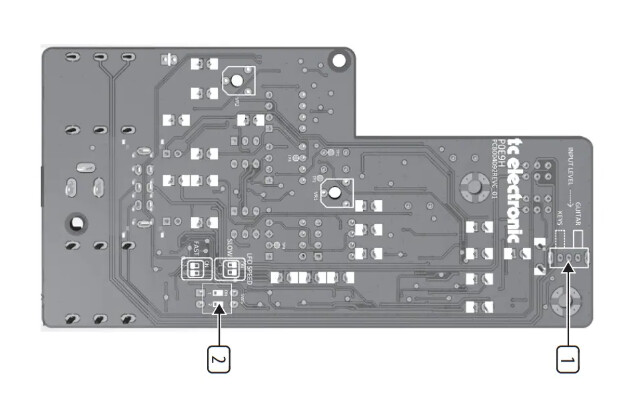
nothing can really be extracted from them but may be useful to draw on if you need to explain something.
edit: this is the schematic for the juno chorus that it’s supposedly based on, I don’t know if that will be helpful for understanding what’s going on with the pcb or not but here it is for posterity.
I broke down the pedal and here are pictures (with my POS cam) I took inside for reference:
you can see there’s a reasonable amount of room to add something in and I have some small prototyping pcb’s and a lot of passive components but I don’t think I have any transistors and I don’t have any IC’s that I think will be useful for this so if you have the time to do so and are able to help me figure out what kind of opamp I will need and how to set it up that would be awesome. I assume the 4580R opamp in the picture is the audio output circuit? I hate surface mount components lol.
here are pictures of the component array on the pcb. I couldn’t find a real schematic online unfortunately.
It’s not a pressing issue but while I have the pedal open if you want me to verify something you can’t see clearly just let me know. Thanks for trying to help out.
My first thought would be to mod the mix stage of the effect, fumbling around with the bypass seems a bit too complicated to me. Get a potentiometer or a toggleswitch to go from something like fully dry to the standard mix.
Usually the signal mixing is done with a pretty straightforward opamp mixer, so you‘d not need many components.
Would be harder to determine where that mix circuit is though.
Also, I should add that I‘ve attempted similar mods before, but only a few of them actually worked, haha 
thanks for the input, what do you mean by standard mix? like, the mean level if I were to analyze and observe the db output of all 3 chorus speed settings and average them? do you then think the answer is an exterior buffer stage or is that not going to cut it?
The chorus effect comes to be by mixing a dry signal with a delayed signal. The delayed signal is fumbled around with the LFOs and whatnot.
If you just cut the delayed signal from the output mix you get the buffered dry signal, when the effect is running. If you disengage the LFOs you‘d get the true bypass as before.
I hope I‘m making sense, I could do a quick mockup sketch of what I mean. Words can be confusing.
so the buffered dry signal is when the footswitch is engaged but no chorus button has been selected is that it? so buffering the bypassed signal either before or after the chorus pedal won’t make a difference?
edit - consolidated to one post:
no I get that the chorus effect is caused by 2 signals out of phase and the speed is modulated by the lfo, you don’t have to explain that part, I’m more just trying to figure out how to avoid the huge level drop when the pedal is bypassed, thanks for the help
Here‘s what I have in mind:
By modding the mixing stage of the „engaged“ effect, you do not get the level drop as you would with the true bypass. The delay and and everything would still be running, it‘s just cut out from the final output.
In my estimation, the mod would require less soldering and parts than fumbling around with the buffer and bypass.
I think that’s what happens already when the true bypass is never used, no? it’s just not a footswitchable engage/disengage due to the chorus settings being implimented as buttons to physically resemble the juno chorus section. am I wrong about this?
the pedal is very minimal in form so it’s just the presets or disengaged, or bypass with the fs.
True bypass doesn‘t involve any buffer, whereas an engaged effect most likely uses a buffer stage. From how I‘ve understood, your level and tone drop comes from the fact that there‘s no buffer at the true bypass?
Another thing to consider – is there really a level drop? Is the volume with the pedal in bypass actually lower than if you‘d not use the pedal at all?
Like we‘ve established (?) before, chorus is usually done by mixing two signals together, so naturally there would be a potential increase in level.
edit: although I‘m not quite sure if I understand your concerns about my mod exactly, it‘s very early morning
I understand, true bypass is a signal which is not dragged down by any buffer or other filtering - it just bypasses the entire effect circuit. yes, there’s a huge level drop honestly you can watch any youtube review of the pedal and everyone has the same results or they mention they had to adjust the levels in post to match up with other audio. There’s a few comparisons with the juno being run through a june 60 pedal to compare juno chorus to the tc chorus. I’ll try and record a clip of bypass - engaged - and with the effect selected if you need proof, the level drop is very significant. if you haven’t selected button 1 or 2 it’s as you said, it’s probably already a buffered through signal but it’s not a very good buffer stage I don’t think. It really is evident with my guitar - it sucks a lot of tone out of the sound. Similar to how a passive volume pedal has a tone sucking effect, people mod those with a buffer and I thought maybe I could do something similar here since I feel like a better buffer might get a more decent signal closer to the true bypass.
I’m just trying to understand if the mod you’re suggesting is not the existing circuit in practice.
Ooooh hang on – you mean there’s a level drop when the effect is “active”, but none of the yellow buttons are pressed?
Well then…
You can somewhat disregard the mod that I’m suggesting. I mean, with a potentiometer you’d get a dry/wet mix control. Also nice, hahaa 
just to illustrate what I’m saying, this is the audio test - I just looped something really quickly with a looper pedal, it’s not anything scientific.
- footswitch engaged (effect off)
- footswitch engaged (effect 1)
- footswitch engaged (effect 2)
4.true bypass (footswitch disengaged)
I’m sure this will help, I did no processing of the audio, I recorded it straight into a zoom recorder. I leveled it for the true bypass so it wouldn’t clip when I disengaged the the footswitch/effect. it’s a super old non-midi yamaha fm keyboard so the audio is not clean but it was convenient at the time so that’s what I used.
anyways I appreciate all the time you took on this, thanks again.
Ah cool, yeah that clears it all up – I was a little confused with all the possible switch combinations haha. Just really quickly messed around in Audacity to check the levels:
- boost by +15 dB
- & 3. boost by +12 dB
… to sooort of get to the same level as 4.
I’d try to check the circuitboard and see if you can locate any of the mixing stage. Theoretically one could replace some resistors and get that missing gain back – I’ll have a look at it when I get home later today.
thank you, sorry for the trouble. I don’t have a lot of luck with surface mount components so I was sort of hoping I could build something with through hole on a small pcb and just tap into what’s already here. It sounds like rather than buffering the true bypass, it needs to have a pre-amp added to the effect stage. They must have designed it like this for a reason but fuck if I know why they would build a 15db cut into the circuit, it makes it almost unusable in any practical situation where you would want a foot-switchable chorus effect that isn’t always engaged.
Another kinda basic thing that I’ve just noticed by looking at your photos of the circuitboard – there seems to be an internal input level switch set to “keys”. What happens when you set it to “guitar”?
the guitar / keys is the input impedance line level to optimize for what is being input, the speed is for the rate of the LFO goes to a significantly faster oscillation. this is basically the reason the version 1 couldn’t be used with keys and sounded so completely different from any juno chorus, because the lfo was exponentially faster since it was designed around a guitar signal path.
sorry there were 2 switches I thought you were talking about the other one at first. it’s the impedance level you were asking about.
I can switch it to guitar and record if you want to see the difference in output volume
I mean I was just assuming, maybe they just put in that -15 dB attenuation in the “Keys” input mode, because synth signals are generally outputting higher voltages than what’s coming from a guitar pickup.
we can find out, I didn’t change any volume levels. I just have to open the pedal up.
@Lauli it made quite a bit of difference, the effect side dry signal no longer has the 15db attenuation, seems close to the bypassed signal level. The effect engaged produces what I’m guessing is +3db above dry signal, and to my ears the switch disengaged is the same level as the dry signal when engaged. I checked the true bypass against each other in guitar and keys and there’s no change there that I can perceive, so as much as I would like the signal to remain constant I suppose I’ll have to choose +3db over -12db and call it a day unless you think I might now have better luck adding a buffer to the signal with the effect engaged.
thanks a lot, I certainly feel like that’s progress beyond where it was before.

